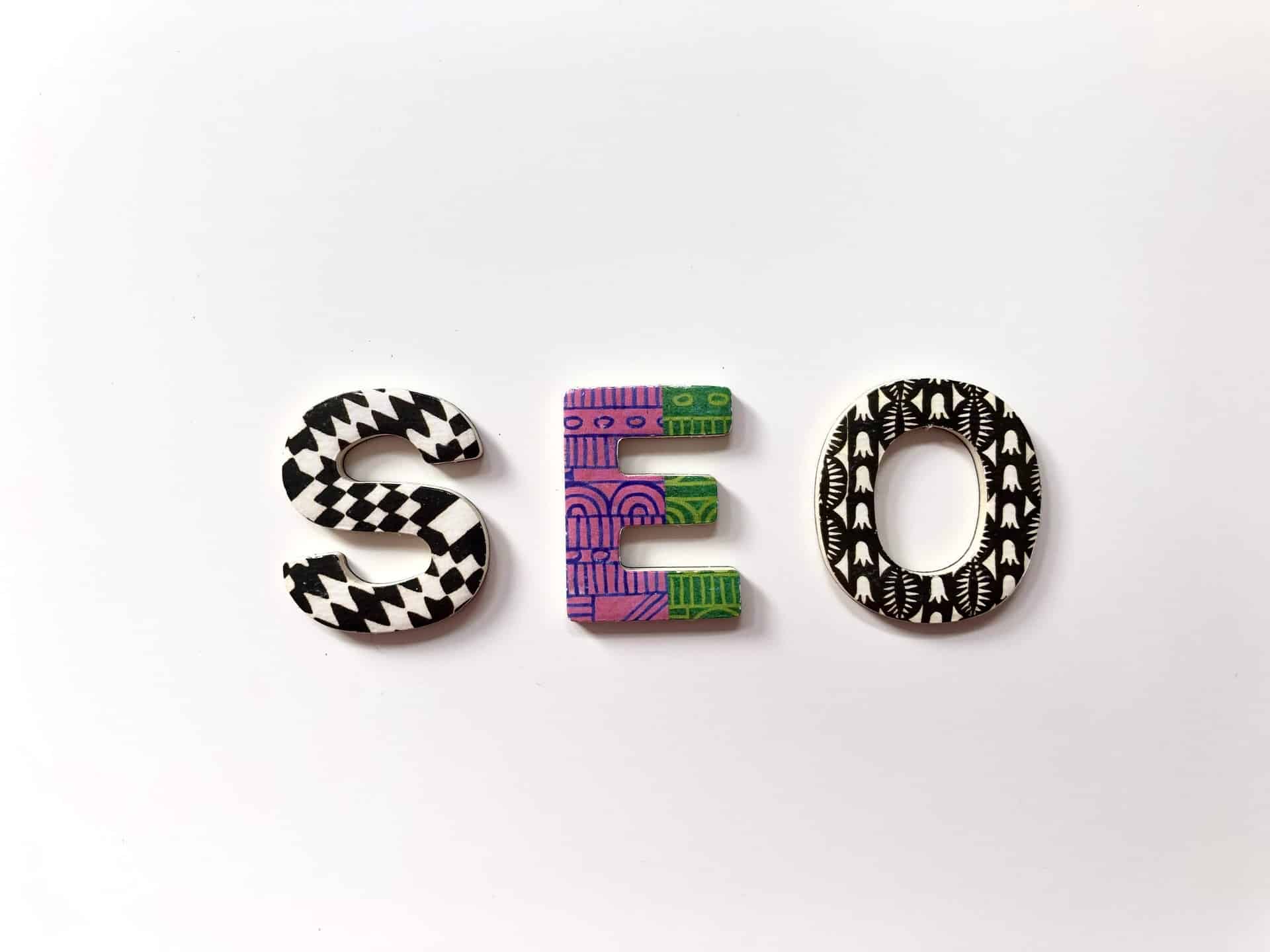Search engine optimization is an important digital marketing tool. It brings a lot of value for businesses looking to build a strong bond with prospects, increase brand awareness, and position themselves as trustworthy professionals in the field. Our in-depth guide will break down – what is SEO, why SEO is essential for modern businesses, on-page vs off-page SEO, how to use this process on WordPress, and more.
SEO Definition
SEO is the collection of techniques that helps businesses and digital marketers improve their page/site rankings in Search Engine Results Pages (SERPs).
Types of SEO
1. On-Page SEO
On-page SEO (or on-site SEO) is the process of optimizing web page content for target users and search engines. It involves aligning page-related elements such as content, headings, HTML tags (title, header, and meta), pictures, and internal links with keywords. This helps in enhanced rankings, which results in organic traffic.
2. Off-Page SEO
Off-page SEO (also known as off-site SEO) steps that you take outside of your own site to increase SERP ranking. For example, if you leave a comment or write a guest post, you are doing off-page promotion. Building backlinks is one of the famous off-page SEO techniques.
Why is it Crucial for Businesses?
There are plenty of advantages of optimizing your website for search engines, including:
- Make your site appear to be more reliable and credible
- Give you better online visibility and traffic.
- You get a chance to give relevant and useful data to the visitors.
Some Important SEO Concepts
Below are a few essential concepts that you need to know:
Meta Tags
Meta tags in SEO are the invisible tags that offer information about the page to site visitors and search engines. This makes it simpler for them to evaluate what your content is all about and make your site stand out in SERP rankings. These tags are typically put in the section of the HTML file. Below are the six meta tags that you must know:
1) Title Tag
The title tag is the page title. It provides a preview to search engines of what the content is about. So, your title tag should be meaningful, clear, and not above 55 characters.
2) Alt Text
Alt Text (Alt descriptions or Alt attributes) is the short description of a picture on a webpage. It helps visually impaired users and search engines to crawl the site better. This means ALT text on image help you create a superb user experience for the visitors.
3) Meta Description
It is a snippet that appears underneath the title tag. This element is very important as it determines whether users will click on the page or not. The basic meta description length is 155 to 160 characters.
4) Robots Meta Tag
Robots meta tag is called “robots tag.” It is HTML code that is put in the section of web page. This tag tells search engines what page links to follow and what not.
5) Header Tag
A header tag is the header of the document. It consists of all the information related to the title and headings of the content. Header tags range from H1 to H6. H1 is an essential tag, and H6 is the least important. These tags help in boosting the Search Engine Optimization and readability of the web page.
6) Canonical Tag
A canonical tag is the HTML snippet that tells the main version for duplicate and same pages. So, if you have the same content available under diverse URLs, you can use it to determine which is the primary one. They are placed within the section of the web page.
Page Speed
Page speed matters a lot in SEO. It is because Google does not deliver results that are slow loading. Having fast-loading pages offers an excellent on-page user experience, makes your search engine ranking better, and boosts your conversion rate. So, we can say page speed is also a vital factor in the success of your site.
Backlinking for SEO
Search engines use backlinks as the signal to link to high-quality content. This means if you have valuable backlinks, you will usually rank higher than those sites with fewer backlinks. There are diverse kinds of SEO backlinks that can help you spruce up your SEO, including guest logging backlinks, press release backlinks, badge backlinks, comment backlinks, and more.
How to Apply SEO Backlinking for SEO?
Here are the ways by which you can build worthy backlinks:
1. Find Backlinking Opportunities with Top Referral Sources
Determine top referral sources of your site. They are the sites that link to your content and provide you with backlinks. This will help you find out new opportunities and build the same content to receive a backlink.
2. Use Outbound Links
If you add links to a high authority site, you can send an outreach mail to build a partnership. Just tell them about your post and how you found their content valuable. If they accept your request, you can receive new backlinks and increased traffic for sure.
3. Leverage Google Search Console
Google Search Console is another technique to find backlink opportunities for your site. This free tool offers valuable data that you can use to get an increased ranking. For example, you can move to the backlinks section and find out which kind of content top linking sites liked and provide you a backlink.
4. Find Broken Links
While “spying” at your competitors, also take a glance at their broken links. It is a simple and fast way to receive backlinks. Broken links are those link that does not exist on a site. Just find the link, get in touch with the competitor site and pitch your website as a replacement for them.
5. Build Link-worthy Quality Content
Another method to get backlinks is by building premium quality content. Ensure it links back to your site, and industry professionals and bloggers can use it. The content can be quizzes, list posts, guides, or articles. This may be time-consuming, but it will provide you with tons of benefits if you do it the right way.
6. Do Guest Blogging
Guest blogging is a proven strategy for getting backlinks. It includes reaching out to various websites that accept guest blogs and submitting your content there to get featured on their site. To find guest blogging sites on Google, just write your topic and add write for us or guest article in the end. There are also free guest blogging sites like Alexa,the Penny Hoarders,Smashing Magazine, etc.
7. Take Part in Diverse Forums
Discussion forums are a superb place to find backlinks. You can take part in forums like Google Webmaster Help Community ,Digital Point, etc. to boost your site traffic and become an industry professional. SEO tools are available that help you find out which forums your competitors are using to get backlinks.
How to Apply SEO on Website?
Here is how you can optimize your site for conversions and SEO:
1. Analyze Your Site Data
If you find that a large number of people on your site do not click on your call-to-action bottoms, there might be some problem. So, collect and analyze data of your website using Google search console and user behavior reports. User behavior reports give you a clear picture of how users behave when they are on your site. On the other hand, the Google search console can help you track the number of sessions, bounce rate, and much more.
2. Perform a Deep Keyword Research
As Google algorithms keep rolling out, you need to focus on optimizing your site for keyword research. You can use SEO keyword research tools such as UberSuggest , Ahrefs Keywords Explorer, KWFinder , etc. They will help you find keywords associated with your industry and business. You can focus on long-tail keywords that fit the user intent of your potential customers.
3. Build Valuable Content
Did you know Google processes more than 6.7 billion searches per day? Also, its algorithms are constantly developing to deliver the best and relevant results to the searchers. So, your next step should be to create keyword-rich and meaningful content for your site and update it regularly. It is the only way to ensure a great user experience and produce a high CTR. Quality content specially built for potential users will help them spend a long time on your website and allow your site to rank higher.
4. Optimize for On-Page and Off-Page SEO
With time, search engine optimization has changed a lot. Today, modern SEO strategies include the use of both on-page and off page SEO. Google uses off-page SEO for measuring your site credibility and on-page SEO for measuring the relevancy of your pages. So, to ensure your site ranks at the top of SERP, make sure you follow this practice.
5. Focus on Mobile Optimization
With countless individuals accessing sites through mobile phones, it has become essential for business owners and marketers to focus on the mobile-first index. Mobile mobile-first index means that Google uses the mobile version of the content for ranking and indexing it. This will automatically keep the users satisfied while navigating your site and offer them an outstanding experience. In addition, this helps your site rank better on search engines.
6. Speed Up Your Web Pages
Page speed is important when it comes to SEO. When visitors land up on your site, and it takes too much time to load, they are more likely to hit the back button and choose other sites over yours. So, make sure you check the speed of every web page. You can perform page speed tests in SEO using pagespeed insights.
7. Get High-Quality Backlinks
Backlinks are the main factor that can help your site rank better. When premium quality sites link back to your site, Google sees your website as highly credible, which helps you climb up ranking. Furthermore, you are also telling your audience that you are a good source of information for them. You can gain authoritative backlinks by focusing on emailing bloggers and influencers in your industry or do commenting.
How to Apply SEO on WordPress Page?
WordPress already has in-built SEO tools. This means it is search engine friendly by default. But you do some extra optimization of your WordPress site or web page to control how visitors find you via search engines.
Below are the WordPress SEO tips you can use to increase search engine optimization on your WordPress site:
1. Pick Right Hosting Provider
A good hosting provider can help you increase SERP rankings to the top. However, it also affects the physical distance between visitors and servers, and downtime that your site faces are essential ranking factors. So, make sure you must select a host that is reputed and trustworthy.
2. Choose an SEO-Optimized Theme
The theme you select for your WordPress site determines your site layout and look. How its built matters a lot because clean coding offers your website an opportunity to rank better on search engine result pages. Your WordPress site can also affect the site speed. So, make sure you pick an SEO-friendly theme that fits your bill.
3. Use the Best SEO Plugin
There are countless plugins in WordPress that are specially built to enhance site SEO. For an excellent outcome, you must choose Yoast SEO. This plugin will help you add a suite of optimization features to your website.
4. Alter Your Permalink Structure
After launching your WordPress site, you must set the permalink structure. Permalinks are the permanent URLs of the pages, posts, and other content of your site. The well-set permalink structure is one of the best ways to enhance SEO for the WordPress site. It also helps in boosting click-through rates and helps users to share your content easily. So, you must ensure your permalinks are descriptive and simple to read. You can change your permalink structure by visiting the back end of your website – Settings > Permalinks.
5. Build a Sitemap
WordPress sitemap is XML (extensible markup language) files that include the list of all public URLs on the WordPress website organized into a hierarchy. It is an important SEO tool that allows search engines to crawl and index the website easily and understand how they are associated with one another. You can add a sitemap to your WordPress site using Google XML sitemaps or Yoast SEO.
6. Use Header Tags in the Content
The header tag is the formatting option in the WordPress editor. You must apply to the headings within posts and web pages. It helps in breaking down the long text and makes it simpler to read.
7. Create Meaningful Content Around Keywords
The next step is to build valuable content around your selected keywords. Pick keywords for each page or post and spread them throughout your content. It will help you increase your chances of showing your content on search engines in relevant searches. Also, make sure you focus on long-form content. Today, tons of great SEO tools can help you get started easily, such as Yoast SEO, SEMrush, Google Search Console, etc.
8. Inject External and Internal Links
Both external and internal links help you boost your site performance. They are very easy to use and manage. An internal link helps to engage users with the multiple web pages of your site at one time. On the contrary, external links are the outbound links that connect the visitors to different sites. But this is an SEO strategy that you must be very careful with because the insertion of too many links or links to irrelevant pages will badly affect your SEO.
9. Leverage Responsive Design
Responsive design is one of the essential ranking factors of Google. Thus, you must ensure that your WordPress site has a responsive layout. In addition, it helps in making your site more mobile-friendly. There are many third-party responsive themes available that provide superb responsive design themes. You can check out the SEO features of each theme and choose a suitable one. Responsive design increases your chances of appearing higher on the SERP ranking.
10. Do Image Optimization
There are numerous reasons why you should add and optimize images in WordPress content. They do not just keep the readers hooked but also move your site ranking up. So, make sure you keep the size low and the quality of images high because this affects the loading speed of your web page.
11. Update Your Posts Regularly
Google algorithms also take into account the content frequency when deciding about the ranking of pages. So, try building fresh content regularly that is more likely to be associated with the searchers. It will allow your WordPress site to perform well on search engines consistently.
Wrapping Up:
Today, more and more consumers are finding every information online and preferring useful content over direct advertising. Queries are extremely targeted. That is why it is essential to offer relevant content if you have a product associated with the query. So, understanding and implementing search engine optimization helps your business stay visible, relevant, and competitive.



